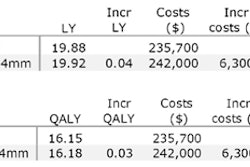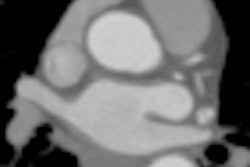Tuesday, December 1 | 11:50 a.m.-12:00 p.m. | SSG09-09 | Room S102D
Incidental extracardiac findings pose a quandary for reporting radiologists and cardiologists. It's uncertain whether or not mentioning incidental extracardiac findings in radiology reports translates into effective management of clinically significant diseases.Some have suggested that reporting incidental extracardiac findings may lead to unnecessary follow-up studies and treatments, with their associated costs and possible harms. The cost-effectiveness of coronary CT angiography may hinge upon the downstream resource utilization for follow-up of incidental findings.
This retrospective study examined incidental extracardiac findings in 151 consecutive adults (mean age, 54; range, 18-83; 30.5% female) undergoing screening coronary CT angiography over a six-year period. Incidental findings were recorded and medical records reviewed for subsequent downstream diagnostic interventions for a minimum one-year and maximum seven-year follow-up period.
In all, 103 incidental extracardiac findings were found in 54% (65/151) of patients. Just over half (54/103) were potentially clinically significant, affecting 27% of patients. Specific recommendations for further follow-up were provided within the radiology report for 31% of new significant findings, but only 6% of patients actually received follow-up imaging or intervention.
Costs were modest based on Medicare reimbursement data, according to presenter Christoph Lee of Stanford University in Stanford, CA; however, "costs likely hinge upon the appropriate specific follow-up recommendations as reported in the radiology report and physician compliance in following written recommendations," he said.
Clinically significant extracardiac findings are common, but most are indeterminate pulmonary nodules. Improved radiologist-clinician communication practices would likely be helpful in minimizing the associated direct costs, he said.




















